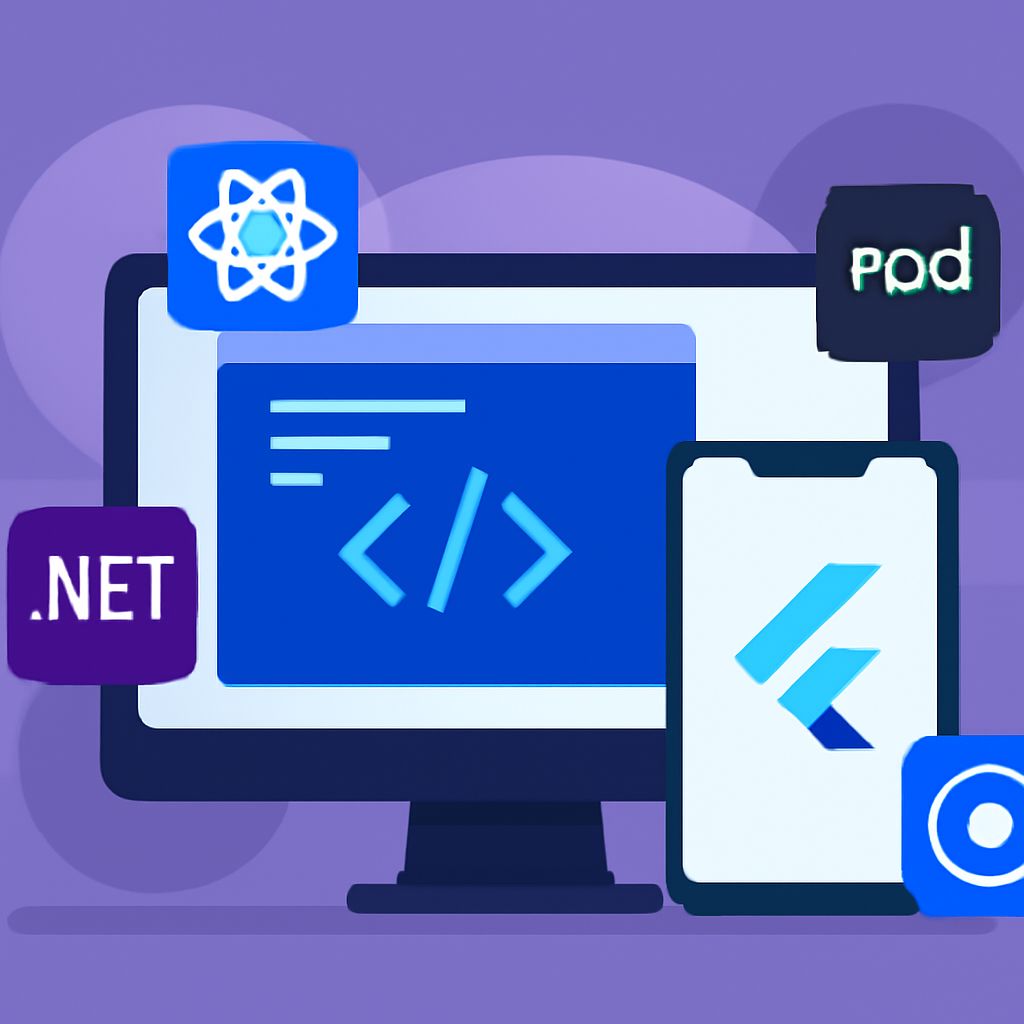Top Cross-Platform Development Solutions for 2025
Discover the best cross-platform development solutions for 2025, enhancing app performance and user experience across devices.

Table of Contents
Top Cross-Platform Development Solutions for 2025
As we enter 2025, the demand for cross-platform development solutions continues to rise, driven by the need for businesses to reach a broader audience with minimal development effort. Cross-platform development allows developers to create applications that can run on multiple operating systems without having to write separate codebases for each platform. This article explores the top cross-platform development solutions available in 2025, examining their features, benefits, and use cases.
1. React Native
React Native has remained a popular choice for cross-platform development due to its ability to deliver a near-native performance while allowing developers to use JavaScript and React. Developed by Facebook, it provides a robust framework for building mobile apps that can run on iOS and Android.
Key Features:
- Hot Reloading: This feature allows developers to instantly see the result of the latest change, thereby speeding up the development process.
- Rich Ecosystem: React Native benefits from a large community and a vast collection of libraries and frameworks that expedite development.
- Native Modules: Developers can write native code for performance-intensive tasks while still using React Native.
Use Cases:
React Native is ideal for applications requiring high performance, such as mobile games, social media apps, and e-commerce platforms.
2. Flutter
Flutter, developed by Google, has gained significant traction among developers for its beautiful UI capabilities and single codebase for multiple platforms, including web, mobile, and desktop applications.
Key Features:
- Fast Development: The Flutter framework allows for rapid prototyping and development with its hot reload feature.
- Customizable Widgets: Developers can create complex UIs by leveraging Flutter’s extensive library of customizable widgets.
- Performance: Flutter applications perform exceptionally well due to their direct compilation to native code.
Use Cases:
Flutter is particularly suitable for startups and businesses that prioritize fast development cycles and beautiful user interfaces.
3. Xamarin
Xamarin, owned by Microsoft, allows developers to build Android and iOS applications using C#. It is integrated into the Visual Studio IDE, which enhances the development experience.
Key Features:
- Shared Codebase: Xamarin enables developers to share up to 90% of their code across platforms.
- Native API Access: Xamarin provides access to native APIs, allowing developers to create high-performing applications.
- Strong IDE Integration: With Visual Studio, developers benefit from powerful debugging and development tools.
Use Cases:
Xamarin is often used for enterprise-level applications where code sharing is crucial, especially in situations where developers are already familiar with C#.
4. Ionic
Ionic is an open-source SDK that allows developers to create hybrid mobile applications using web technologies like HTML, CSS, and JavaScript. It is often used with Angular or React.
Key Features:
- Cross-Platform Compatibility: Ionic applications can run on iOS, Android, and the web from a single codebase.
- Pre-built UI Components: Ionic offers a library of pre-built components that help speed up UI development.
- Integration with Capacitor: Ionic can be extended with Capacitor, which allows access to native device features.
Use Cases:
Ionic is a good fit for applications that require a rapid development cycle and are primarily web-based, such as progressive web apps (PWAs) and MVPs for startups.
5. Appcelerator
Appcelerator provides a platform for building native mobile applications using JavaScript. It focuses on rapid application development and has a highly customizable framework.
Key Features:
- Cross-Platform Development: Build applications for iOS, Android, and Windows from a single codebase.
- Real-Time Analytics: Appcelerator includes analytics tools to assess application performance and user behavior.
- Cloud Services: Leverage cloud services to enhance app capabilities and reduce infrastructure costs.
Use Cases:
Appcelerator is suitable for businesses looking to develop applications that require real-time features and analytics, such as social networking or e-commerce applications.
6. NativeScript
NativeScript is an open-source framework that allows developers to build native mobile applications using JavaScript, TypeScript, or Angular. It provides a unique approach by compiling directly to native APIs.
Key Features:
- Access to Native APIs: Developers can use native APIs directly from JavaScript without a wrapper.
- Responsive UI: NativeScript allows for building highly responsive applications with a native look and feel.
- Strong Community Support: A vibrant community contributes to plugins and resources, enhancing the development experience.
Use Cases:
NativeScript is well-suited for applications that require high performance and close integration with native device features, such as enterprise apps and mobile utilities.
7. PhoneGap/Cordova
PhoneGap, built on Apache Cordova, allows developers to create hybrid applications using HTML, CSS, and JavaScript. It is particularly appealing for developers who wish to leverage web technologies for mobile app development.
Key Features:
- Multi-Platform Support: PhoneGap applications can be deployed across various platforms while maintaining a single codebase.
- Access to Native Device Features: Utilize device capabilities like camera, GPS, and notifications through plugins.
- Plugin Ecosystem: A rich ecosystem of plugins enables significant functionality expansion.
Use Cases:
PhoneGap is ideal for smaller applications that require quick development and do not require heavy performance optimizations.
Table of Comparison
| Framework | Languages | Performance | Best For |
|---|---|---|---|
| React Native | JavaScript | Near-Native | Mobile apps requiring high performance |
| Flutter | Dart | Native | Startups and beautiful UIs |
| Xamarin | C# | Native | Enterprise solutions |
| Ionic | HTML, CSS, JavaScript | Web-Based | Rapid development and MVPs |
| Appcelerator | JavaScript | Native | Real-time applications |
| NativeScript | JavaScript, TypeScript | Native | Performance-critical apps |
| PhoneGap/Cordova | HTML, CSS, JavaScript | Hybrid | Simple, quick applications |
Conclusion
The landscape of cross-platform development solutions is diverse and continually evolving. Each framework has its strengths and weaknesses, making it important for developers and businesses to assess their specific needs before choosing a solution. Whether you prioritize performance, rapid development, or beautiful user interfaces, there is a cross-platform solution in 2025 that can cater to your requirements. As technology advances, these frameworks will continue to improve, making cross-platform development more efficient and accessible.
FAQ
What are the best cross-platform development frameworks for 2025?
Some of the top cross-platform development frameworks for 2025 include Flutter, React Native, Xamarin, and Ionic, each offering unique features and capabilities for building high-quality applications.
Why should I choose cross-platform development for my app?
Cross-platform development allows you to create applications that run on multiple platforms from a single codebase, reducing development time and costs while reaching a wider audience.
What are the key benefits of using Flutter for cross-platform development?
Flutter offers fast development with hot reload, a rich set of customizable widgets, and excellent performance, making it a popular choice for developers looking to build visually appealing applications across platforms.
How does React Native compare to other cross-platform solutions?
React Native provides a native-like experience and performance by using native components, making it highly efficient for developing mobile applications while maintaining a single codebase.
Will cross-platform development affect the performance of my app?
While cross-platform apps may not always match the performance of fully native apps, modern frameworks like Flutter and React Native have significantly improved performance, making them suitable for most applications.
What should I consider when choosing a cross-platform development tool?
When selecting a cross-platform development tool, consider factors such as community support, documentation, ease of use, performance, and the specific requirements of your project.






